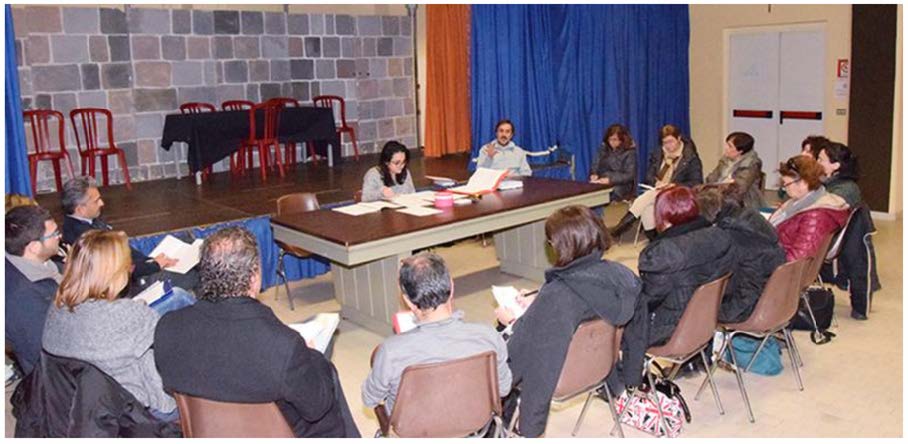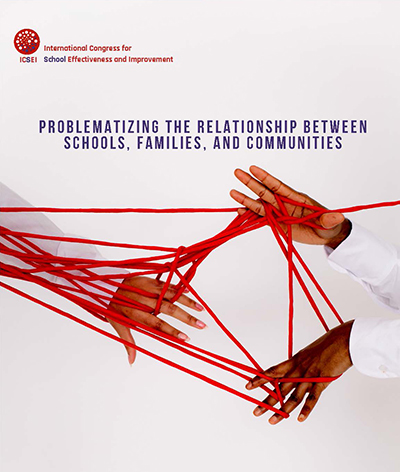This contribution aims to reply to the “how” question in the call: how do the connections between schools, parents and communities take place, and does the cultural context make a difference? I’ll present how the connections between schools and families take place in the Italian context by adopting the Epstein framework. Parents’ involvement in Italy is regulated by national laws and follows established and widespread practices. The most important ones are: 1. Parents receiving information by the schools through emails, website, and now mainly through the electronic register app (online class journal with information on student attendance, homework, school grades, official school communications) 2. Parents’ participation in the school board, with the election of the Parents’ members
3. Parents’ participation in the class teacher councils, with election of parents’ representatives at the class level
4. Individual parent-teacher meetings attendance, where teachers inform on the progresses of the students, usually once or twice a year
5. Parent-teacher conference attendance, where the school invites parents for general meetings at the class or school level, usually once or twice a year
6. Parents contributing to the school budget, where the school asks parents to pay an annual voluntary fee for specific purposes
7. Parents’ participation to special days’ events (welcome party for first school day, Christmas party, final school day party). Joyce Epstein, one of the most influential authors studying school, family, and community partnerships, developed a model that identifies six types of parents’ involvement. These types represent possible ways in which schools can involve more families in their children’s education.

This picture is an example of the decision-making dimension: a school board meeting, Istituto Comprensivo Santena (Torino), Italy. Eight parent representatives are sitting in the school board meeting, along with the school principal and eight teacher representatives.
Looking at Italian schools, two of these dimensions appear to be more developed than others. The Communicating dimension has been increasingly supported by ICT in recent years, and with the “Electronic register” app an additional step forward has been taken. Nevertheless, this huge and uninterrupted flux of information is mostly one-way. We should reflect on how to design and conduct effective forms of communication regarding school programs and student progress that involve parents in an active role.
The above image shows an example of an electronic register app. It allows parents – and others – to know in real time what is happening in the class (left side) and the student’s grades (right side). A second dimension, that of Decision-Making, has grown strongly in Italy thanks to the national laws introduced in the 1970s, which promoted the social involvement of all school actors (teachers, parents, and students) in the democratic governance of schools. Parents are elected to the school board and the board president must be a parent. School elections are held annually to elect parent representatives at both the class and school level. Despite these laws, many argue that the social governance of a school is formal, and that decisions are made primarily by the school principal and its staff.
On the other side, there are two dimensions that appear underrepresented in the Italian educational debate and school practices, namely Parenting and Learning at home. By “parenting” we mean aiding families to understand child and adolescent development and helping to establish home environments that support children as students. “Learning at home” refers to providing information and ideas to families about how to help students with homework and curriculum-related activities and decisions. These two dimensions are closely related to the learning process and involve the student-parent-teacher triad. During the first Covid-19 pandemic when schools stopped face-to-face lessons and we experimented with distance learning on a large scale, we realized how necessary an educational dialogue on these topics between teachers and parents was. The health emergency revealed the importance of family resources, well-being at home and parental support for children’s learning.
Important places for developing Parenting and Learning at home are individual parent-teacher meetings.
I would like to conclude by using the inspiring work of Janet Goodall, Learning- centred parental engagement: Freire reimagined (2018). She suggests that parental involvement with schools (attending meetings, events and so forth) is nothing but the first step in achieving parental engagement in children’s learning. Schools should involve parents in their children’s learning, helping them to create a positive attitude towards learning at home. Parents can be co-constructors of knowledge about their children. Teachers and parents working together to support the child’s learning is one of the lessons learned during the Covid 19 emergency, and one that we must not forget.
References:
Epstein, J. (2001). School, families, and community partnerships: Preparing educators and improving schools. Westview Press. Goodall, J. (2018). Learning-centred parental engagement: Freire reimagined, Educational Review, 70(5), 603-621, DOI: 10.1080/00131911.2017.1358697
This article was originally published on ICSEI DIALOGIC 2023, the new research magazine of the ICSEI – International Congress for School Effectiveness and Improvement. A special thank to the international association’s Editorial Board.The author, Sara Romiti is a Resercher at the National Institute for the Evaluation of Education and Training (INVALSI) in Italy, she also coordinates the ICSEI – International Congress for School Effectiveness and Improvement’s 3P Network, a research group of policy-makers, politicians, and practitioners who deal with issues related with education at the international level.

